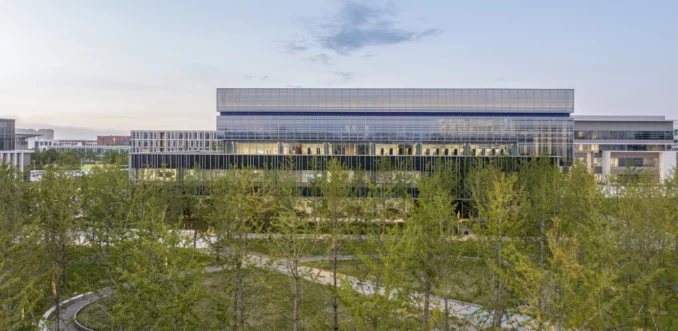
Duke Kunshan University, a collaboration between Duke University and Wuhan University, represents a forward-thinking approach to landscape design amidst China’s rapid globalization and educational expansion. Covering 77.5 hectares, the project is a testament to sustainable and ecological design strategies that confront head-on climate change and urbanization challenges. The campus’s design emphasizes innovative water management techniques inspired by the Jiangnan region’s water traditions to foster a resilient and ecologically balanced environment. This system supports landscape and cultural values and incorporates drainage, collection, purification, storage, and utilization processes, enhancing campus sustainability.
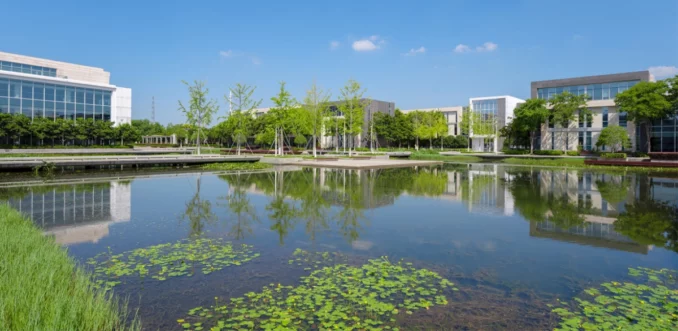
The project’s phased development—spanning over thirteen years and including the construction of Duke Gardens—reflects a dynamic response to both humans and nature’s evolving demands of space. The design seamlessly integrates Kunshan’s regional culture with the campus’s educational mission by developing separate yet interconnected systems for natural and human activities. Duke Gardens embodies the shift towards quality-focused development, creating a communal space that encourages ecological awareness, inner reflection, and leadership development among the university community. This holistic approach marries ecological functions with spatial design to craft a campus that is both a functional educational facility and a beacon of sustainable design innovation.
Site Condition & Challenges
Located on a critical waypoint along migratory bird routes, the site faces ecological disturbances due to urban development, frequent rainfall, and extensive land excavation. These factors have led to water bodies penetrating two layers of groundwater, reaching depths of up to 11 meters and resulting in water quality between levels IV and V. Additionally, the diversity of plant species and habitat types is limited, causing an imbalance in the ecosystem.
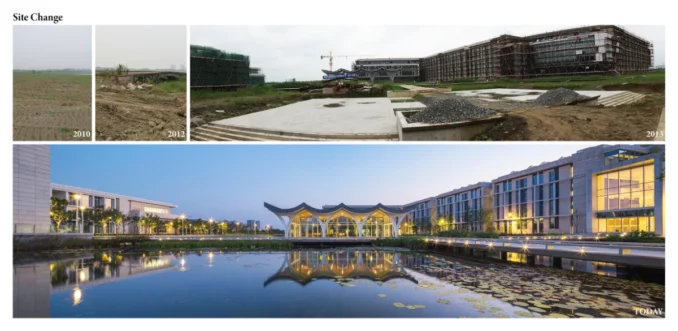
Over a 13-year design endeavor, the landscape team confronted several complex challenges: rejuvenating the site’s native ecological vitality and enhancing water quality while fostering a unique sense of place for the Duke project. The task involved leveraging fragmented land parcels to create cohesive outdoor spaces for the campus community. Moreover, the design aimed to integrate Kunshan’s cultural and environmental characteristics, crafting an academic atmosphere conducive to developing this Sino-Western collaborative university.
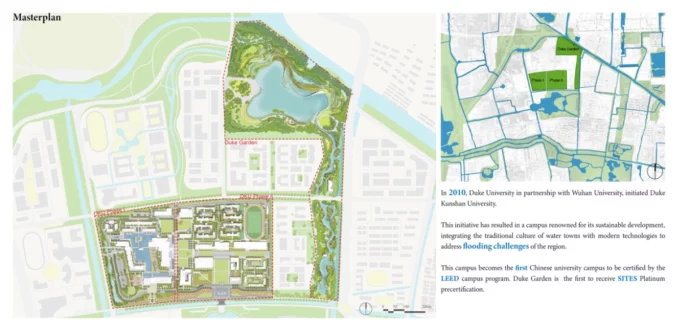
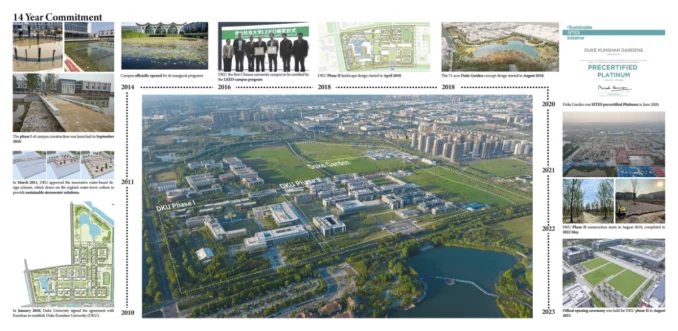
Design Strategy
Time has always been a critical factor for the landscape team, which integrates local climate conditions, campus activities, and water level variations into the spatial organization of Duke Kunshan University. Adopting a holistic ecological approach, the design seamlessly blends the campus’s water bodies into a coherent system. This water-centric landscape project is a microcosm for sponge city design and implementation, showcasing how urban areas can manage water sustainably. The campus water environment forms a controllable, recyclable ecosystem that evolves with the seasons, establishing the campus as an exemplary site for ecological education. This design addresses practical needs like stormwater management and water purification, enhances biodiversity, and creates dynamic, seasonally changing landscapes.
As the campus’s spiritual and cultural needs have grown, the design introduced two non-interfering systems complemented by strategic plantings and hardscape elements. This approach integrates local cultural elements and the Duke campus atmosphere into the second phase of the design. Duke Gardens emerges as a space for contemplation and future thinking, reconstructing diverse ecological habitats and multi-layered landscapes. It achieves international environmental standards in ecological sustainability, water conservation, purification, flood prevention, recycling, and biodiversity, marking a significant stride towards harmonizing ecological and educational goals.
Spatial Node Design
Time & Future
Thirteen years ago, Duke Kunshan University’s landscape team adopted an ecological-first approach, setting a precedent in water system design for the region. This early vision laid the foundation for subsequent development phases, emphasizing environmental enhancement alongside evolving spatial needs. In the second phase, cultural elements and ecological design were harmonized, creating a mature ecosystem that blends human activity with natural growth, thus illustrating the project’s commitment to sustainability and community engagement.
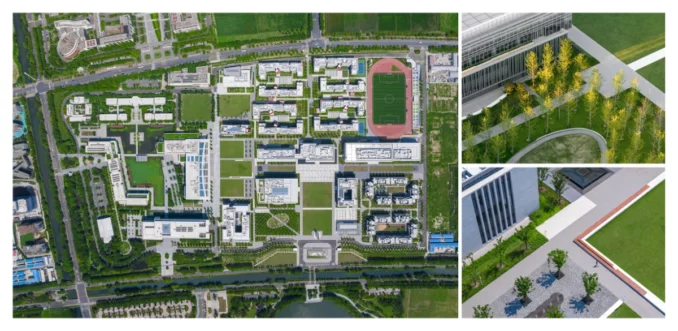
From the beginning, Duke Gardens was envisioned as both an educational resource for the university and a recreational space for the community, emphasizing the campus’s role in ecological education. The foresight of this approach has proven to be a sustainable blueprint for education, demonstrating Duke Kunshan University’s commitment to integrating ecological stewardship with academic excellence in response to climate challenges.
Space, Water Level & Time
The spatial design of Duke Kunshan University dynamically interacts with the seasonal fluctuations of water levels, transforming the lake’s surrounding areas and the bridge at its heart into versatile waterfront platforms. These platforms seamlessly transition between squares, outdoor theaters, classrooms, open-air tea rooms, and water channels, catering to a variety of functions like celebrations, viewing, learning, reading, and relaxation. During the quieter months of February, July, and August, when school attendance diminishes, the use of these spaces decreases. This period coincides with higher natural water levels, presenting the campus in a serene atmosphere that reflects the typical water town layout of Kunshan. Conversely, during academic periods, lower water levels due to reduced natural water supply increase space for outdoor interactions, perfectly accommodating the heightened demand for campus outdoor activities.
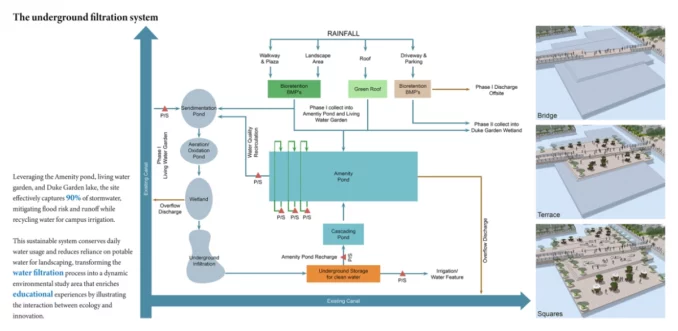
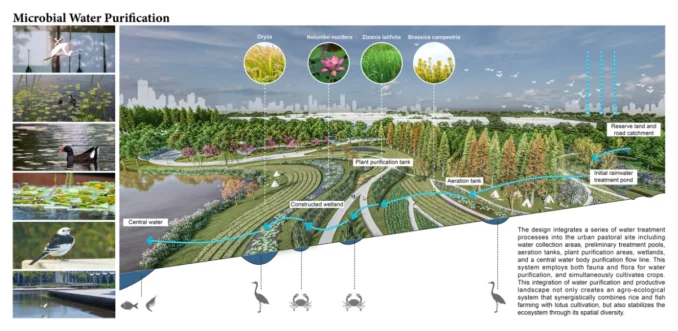
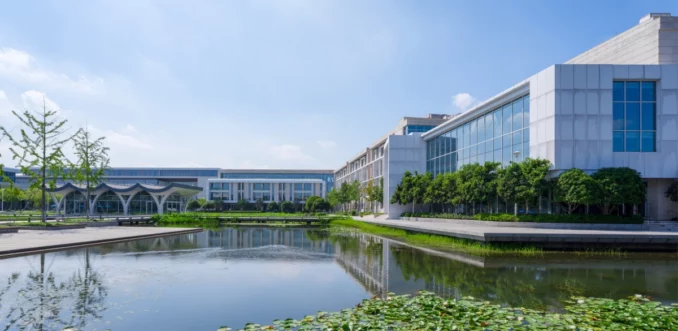
Nature & Education
In the completed Duke Kunshan University campus, water has become a focal point, achieving the original goal of using water as a narrative to showcase ecological education and promote respect for the environment. Teachers incorporate the campus’s water cycle design directly into their lessons, offering students a tangible understanding of sustainable practices. Moreover, the landscape design of the campus has been integrated into the curriculum of the environmental studies program, further embedding ecological principles into the educational experience.
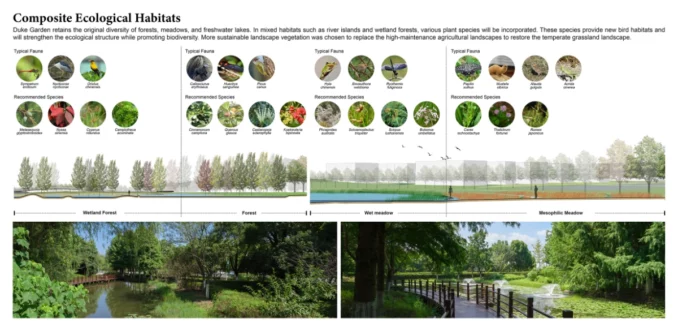
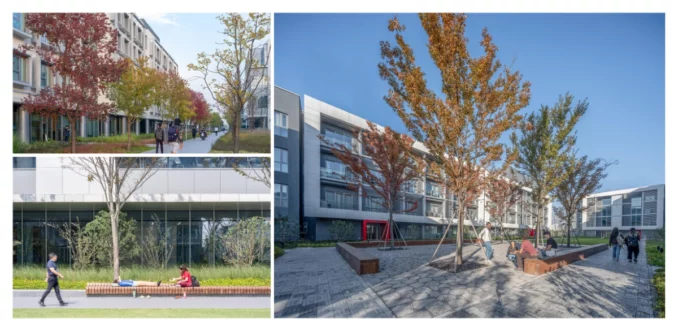
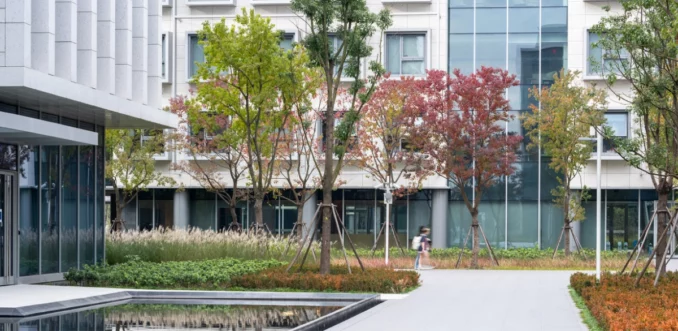
Social Significance
Thirteen years ago, the Duke University project embarked on a path of visionary development, fostering new collaborations between foreign universities and community development. This initiative has led to the introduction of pioneering education and the dissemination of innovative concepts. The landscape team integrated forward-looking ecological considerations and environmental friendliness into the university campus’s educational atmosphere, enhancing both design and educational outcomes.
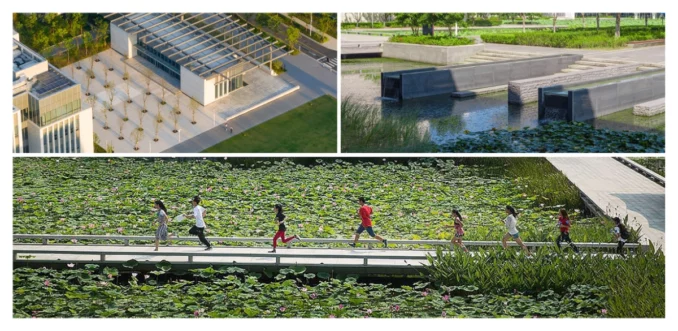
Economically, although the underground filtration system for water purification added an initial cost of 3 million yuan, the completed rainwater harvesting and green space irrigation systems have resulted in annual savings of 350,000 yuan. This means the additional investment can be recouped within eight years, demonstrating the project’s sustainability. Moreover, the implementation of sponge city concepts has alleviated the burden on surrounding infrastructure and investment, improving the area’s environmental quality and increasing the value of nearby land developments.
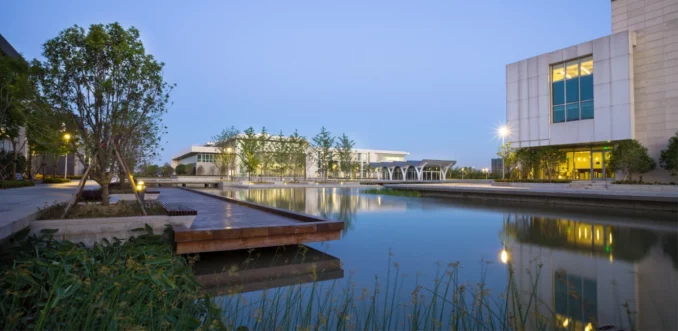
The project has also contributed to maintaining stable and healthy groundwater levels in the region, providing a conducive habitat for birds, amphibians, and small mammals. Water quality within the campus has significantly improved, with monitoring data consistently meeting or exceeding the Grade IV surface water quality standards and most indicators reaching Grade III standards. This performance surpasses pre-development stormwater runoff control requirements, making the campus a significant sponge in Kunshan’s Miaojing dike system. Integrating sponge technology with landscape design has earned acclaim from both domestic and international faculty, students, and visitors, serving as an exemplary model of environmental stewardship and social impact.
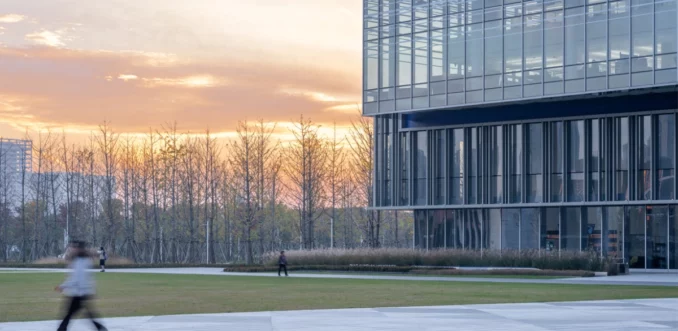
Duke Kunshan University
Urban Design: Futurepolis Urban Planning & Architecture Design Inc.
Design Lead: Huilai Shi
Design Team: Wei Gao, Lixun Zhou, Yunlan Fan, Rui Li, Qianqian He, Huitao Pang
Landscape Construction Team: Suzhou First Construction Group Co., Ltd., Jiangsu Hubin Garden Construction Co., Ltd., Suzhou Zhengyuan Garden Development Co., Ltd.
Collaborators: LandDesign (USA), Perkins&Will, Gensler, Biotope Ecological Engineering Consulting Co.
Image Credits: TraceImage, Futurepolis Urban Planning & Architecture Design Inc.



